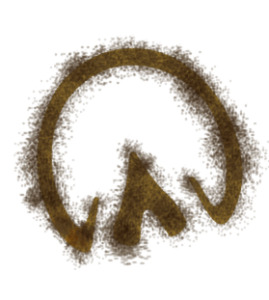Hay everyone!
The fall semester has officially begun here at Rutgers! It’s nice to see all the students back on campus; the farm gets so quiet during the summertime. I hope y’all have had a smooth start to your school year too. I’m sure many of the Rutgers students would agree with me when I say that the “first day of school” feeling never goes away, even when you’re in college!
Let’s jump right in. Today, we’ll be investigating contagious respiratory diseases. You might be thinking, “Lord Nelson, isn’t that what you talked about in your last blog?” That’s absolutely right! In my “Back to School” blog, y’all got an introduction to recognizing when your horse might be sick. We’ll be continuing this discussion today with some information about specific diseases. If you haven’t already, check out my last blog to get caught up!
The three specific diseases I’d like to discuss today are strangles, equine influenza, and equine herpesvirus:
Strangles
Strangles is one of the most common infectious diseases in horses around the world. It is caused by bacteria, and the specific strain is called Streptococcus equi. Horses between the ages of one and five are most commonly affected, but older horses with weaker immune systems can get it too, even if they were exposed when they were younger. Signs of infection typically start to appear two to six days after the horse comes in contact with the bacteria. Anything in the environment can become contaminated, like feed or water buckets, stall walls, halters, brushes, and the boots and clothes of handlers. This makes it really easy for the disease to spread to other horses by accident.
Equine Influenza
Unlike strangles, equine influenza is caused by a virus. This virus is distinct from those that cause the flu in humans and other animals. When you get your flu shot this year, make sure your horse is up to date on theirs too! This is important because there are a variety of different strains and subtypes of the influenza virus. Viruses have the ability to mutate over time, so the strains included in the vaccines are periodically updated to ensure that horses have the best protection against current viruses. Horses tend to exhibit signs pretty soon after exposure, only one to three days. Coughing is one of the most telltale signs of infection, and a coughing horse can easily disperse the virus and infect an entire barn of unvaccinated horses.
Although otherwise healthy horses generally make a full recovery after being ill, it can take quite some time. The virus destroys the lining of the throat and lungs, and these cells take about three weeks to regenerate. This means that a horse is at risk for contracting a second infection like pneumonia.
Equine Herpesvirus (EHV)
Equine herpesvirus is another type of viral infection found in horses. Just like equine influenza, there are multiple subtypes of the virus. The two most common are EHV-1 and EHV-4, and they can cause neurological issues and abortions in addition to respiratory disease. Infections often occur in groups of foals and horses younger than two years old. Unfortunately, a horse of any age can get sick multiple times. Once a horse has recovered from their illness, the virus becomes dormant in their body. This means that there are no signs or symptoms of an infection, but the virus is “taking a break” in the cells of the horse. It can be reactivated and spread during times of stress.
Even though all of these conditions are pretty scary, there are certainly precautions that you can take to make sure your horses are happy and healthy. Keeping up with vaccinations is definitely one that comes to my mind. Biosecurity on your own property or when you’re traveling with your horse is also important. The ESC website has tons of resources on this topic: click on the search bar on our home screen and type in “biosecurity” to see for yourself!
Until next time.
Your friend,

Lord Nelson
